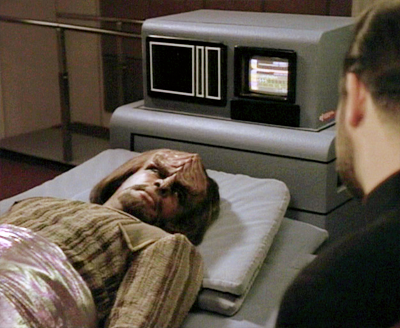Hi, friends! Today, I’m going to post something a little different than the “high-minded indignation” this blog usually features. Instead, I’ll be giving some space to support the Indiegogo campaign for an awesome short story anthology that will explore disability—and the intersectionality of race, nationality, gender, sexuality, and class—in both the imagined physical and virtual spaces of the future. Co-edited by Kathryn Allan and Djibril al-Ayad, Accessing the Future has already experienced a tremendous outpouring of community support on Indiegogo. Having reached their initial goal of $4,000, the editors are now pushing towards raising $7,000 total by September 16th. This extra funding would allow authors for the anthology to be paid a professional rate (.06/word), which we can all agree is a Good Thing.
To learn a bit more about the people behind this project, I recently sat down with (and by that I mean, “emailed”) co-editor Kathryn Allan to talk a little bit about disability and science fiction.
Space Crip: How do you define science fiction? What makes a story science fiction?
Kathryn Allan: No one has ever asked me this before–awesome! I define science fiction (SF) as a genre that imagines future possible worlds based on the events, politics, and technology that we have today. I personally have a broad understanding of SF, so I would say that an SF is one that is set in time that is not our own current reality; it makes guesses about how we (as humans) will shape our future world(s); and embodies a spirit of exploration and curiosity about what is possible.
SC: Compared to other genres, how do you think science fiction has fared in representing disability? What possibilities does sci-fi open up or foreclose compared to other genres?
KA: I’m the most experienced in reading SF these days, but I think that it is a genre that has always and continues to be one that takes up disability most intensely because of its focus on technology (and medical “advances”). In horror and fantasy, for instance, disability is there too and in similar ways: in horror, like SF, disability too often marks an individual as a monster or evil doer; in fantasy, like SF, disability frequently sets out a person as “extra special” (like the blind mage who can “see” the future). Unlike horror and fantasy, however, SF is kinda obsessed with stories of “cure,” and other medical stuff like prosthetic technologies and genetic engineering (a.k.a., eugenics). Because of that technological (and medical) focus, SF opens up spaces to question/challenge/explore what it means to human, and, perhaps more importantly for this conversation, who gets to be counted as human. Since SF is a genre where writers set out their visions of what may come, it’s essential that care is taken in how they create their idealized (or dystopic) futures: if disability is “cured” in the future, a very common notion in SF, then what does that tell people with disabilities of how they are valued today? I really believe that SF holds the potential to be a leading genre in re-imagining disability in creative ways that challenges the reductive and harmful stereotypes that society currently holds…it’s just going to take a while for a good chunk of SF writers to identify their (often able-bodied) assumptions about what it means to live with a disability and to start writing three-dimensional, realistic characters who have a disability. Also, we need a plurality of voices in SF creating visions of the future and that must include people with disabilities (visible and invisible, physical and mental)!
SC: Where do you think sci-fi has failed in terms of disability? Where has sci-fi succeeded?
KA: As I covered in my answer above, SF usually fails in having realistic representations of people with disabilities. Too often, if a character has a visible disability, they are like super evil (e.g., Davros from Doctor Who) or, alternatively, they are super inspirational (a “super crip”) as they “overcome” their disability (e.g., Jake Sully in Avatar). Or, even worse, disability doesn’t exist (or is highly policed/controlled) in the future because genetic engineering “cures” all possible physical and mental differences deemed undesirable (e.g., Gattaca). These are the kinds of representations of disability that really need to go. In terms of examples of stories that address disability in realistic, thoughtful ways, I recently wrote a post on Pornokitsch that identifies 5 of my favourites: Larissa Lai’s Salt Fish Girl, Jacqueline Koyanagi’s Ascension, Morgan J. Locke’s Up Against It, James Patrick Kelly’s “The Promise of Space,” and Nalo Hopkinson’s Sister Mine. All of those stories treat disability as social construct, and have three-dimensional characters with disabilities.
SC: Space Crip largely talks about television and film whereas Accessing the Future will be an anthology of short stories. Do you have any short story recommendations for sci-fi fans interested in disability?
KA: In addition to Kelly’s story “The Promise of Space,” I think SF fans interested in reading about disability would enjoy reading the recent short stories (all free online) by Anna Caro’s “Millie,” Jack Hollis Marr’s “Always Left Behind,” Nick Wood’s “Lunar Voices (On the Solar Wind),” and Aliette de Bodard’s “Immersion.”
SC: Thank you, Kathryn, for taking the time to talk. Readers, if this interview has peaked your interest, head over to the anthology’s Indiegogo page and pre-order your copy before September 16th!
